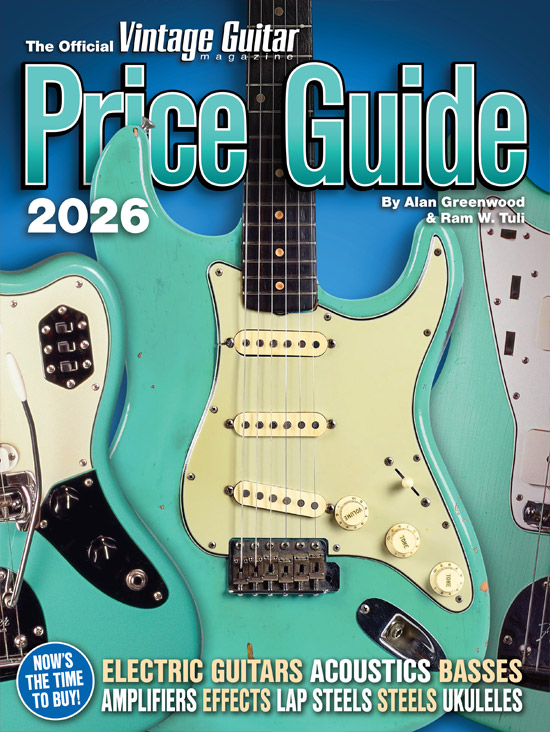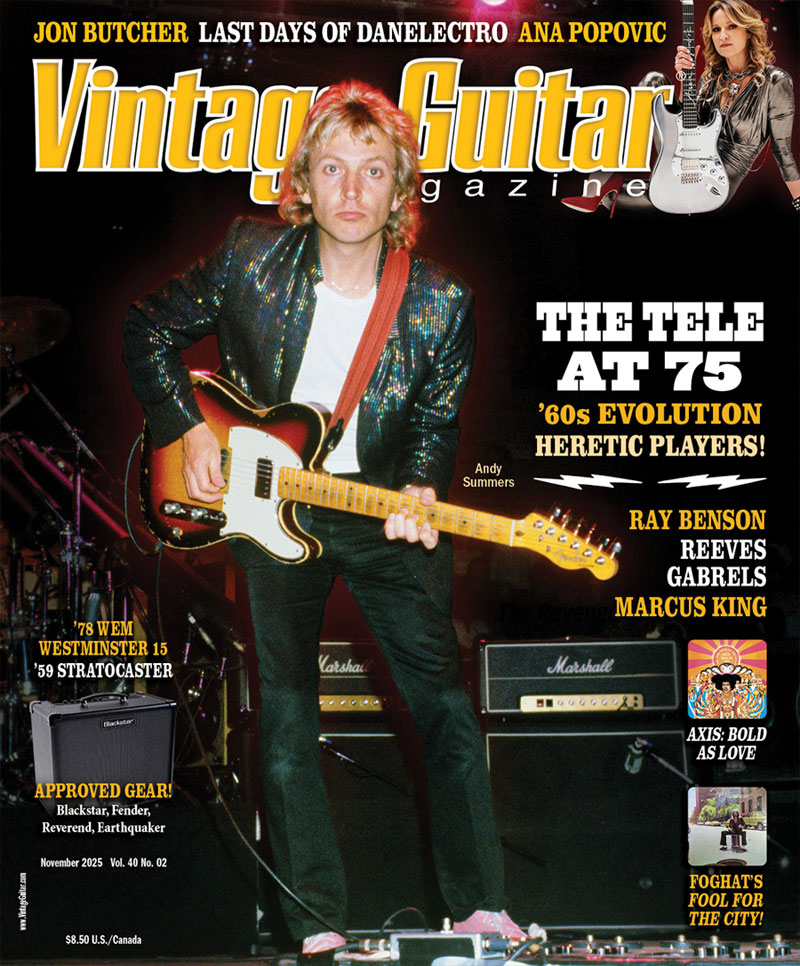
The music world lost session legend Vic Flick on November 17, at age 87. While not a household name, Flick’s soundtrack riff in James Bond movies became one of the most-famous licks in guitar history, beginning with 1962’s Dr. No.
“Almost every guitar player is familiar with his phrase used in the James Bond themes,” said guitarist/bassist Bob Spalding of The Ventures. “Unfortunately, not many remember the guitarist who played that famous phrase, but it was Vic Flick. He left a great legacy.”
In the Swinging ’60s, Flick (VG, April ’12) recorded with a list of pop royalty including Beatles producer George Martin, Jimmy Page, Cliff Richard, and Nancy Sinatra. He also played on pop smashes like Petula Clark’s “Downtown,” Dusty Springfield’s “I Only Want to Be With You,” and the Tom Jones classics “It’s Not Unusual” and “What’s New, Pussycat?”
Before finding fame with 007, Flick played instrumental rock with the James Barry Seven, led by the composer/arranger who’s name is synonymous with the Bond soundtracks. The Barry connection helped Flick land the Bond job, for which he was paid a kingly £6 (less than $17). Recalling the session, he said, “I overplayed the guitar to give the sound a bit of urgency and kind of pushed the beat a little to add excitement. The sound of the 007 theme was also a breakthrough in recording, due to its technique. In the early ’60s, the orchestra would record only one take, using what the studios referred to as ‘compatible stereo.’ This unique recording method allowed for the sound of the guitar to bleed into adjacent microphones of the orchestra, adding a lustrous, ambient quality to the final recording.”
Session guitarist and longtime Supertramp sideman Carl Verheyen relates how that Bond riff still impacts his own studio work.
“I can’t begin to count the many times in the studio I’ve gotten the request, ‘Can you get that James Bond sound?’ Or, ‘Play that E minor/major-7th spy chord,’” he said. “Eventually, I came to find out who the legendary guitarist behind those tones was – Victor Harold Flick. It must have been wild being in the swinging London studio scene in the ’60s, playing on hit records like Petula Clark and Tom Jones. Vic is even on the Beatles’ Help! soundtrack – we heard him every day. What a hero!”
Discussing his Bond rig, Flick told VG about his rare six-string, the 1939 Clifford Essex Paragon De Luxe. “The guitar is very English. Clifford Essex was a luthier and banjo builder who established himself in London in the ’30s. Though predominantly a banjo maker, he made some great guitars, mine being one of them… My Paragon De Luxe guitar was an excellent rhythm instrument and designed to be played in a dance orchestra… Mostly, I used a DeArmond pickup through a DeArmond volume pedal into a Fender Vibrolux amp. I purchased the Fender in 1962, just prior to the Bond recording that June.”
After decades of studio obscurity, in the ’90s Flick was (finally) the subject of a feature by H.P. Newquist in Guitar magazine. Now director of the National Guitar Museum, Newquist counted the London session man as a friend.
“Vic was perhaps the most underrated electric guitarist ever,” he said. “Not only was his performance on the James Bond theme iconic, but he played on hundreds of recordings that helped define pop music in the 1960s and ’70s. In addition, Vic was a gentleman – very proper, very British, but with a very sly sense of humor, which he delivered with a wink.”
Flick later got to tell his own story in the enjoyable autobiography, Guitarman. When asked if he ever got tired of playing the James Bond riff, he responded, “The good public reception I get whenever I play ‘The Theme’ far outweighs the constant repetition. I’m grateful that I am part of the James Bond world, having had no idea at the time that those few notes I played in 1962 would follow me down through the years.” – Pete Prown
This article originally appeared in VG’s February 2025 issue. All copyrights are by the author and Vintage Guitar magazine. Unauthorized replication or use is strictly prohibited.



